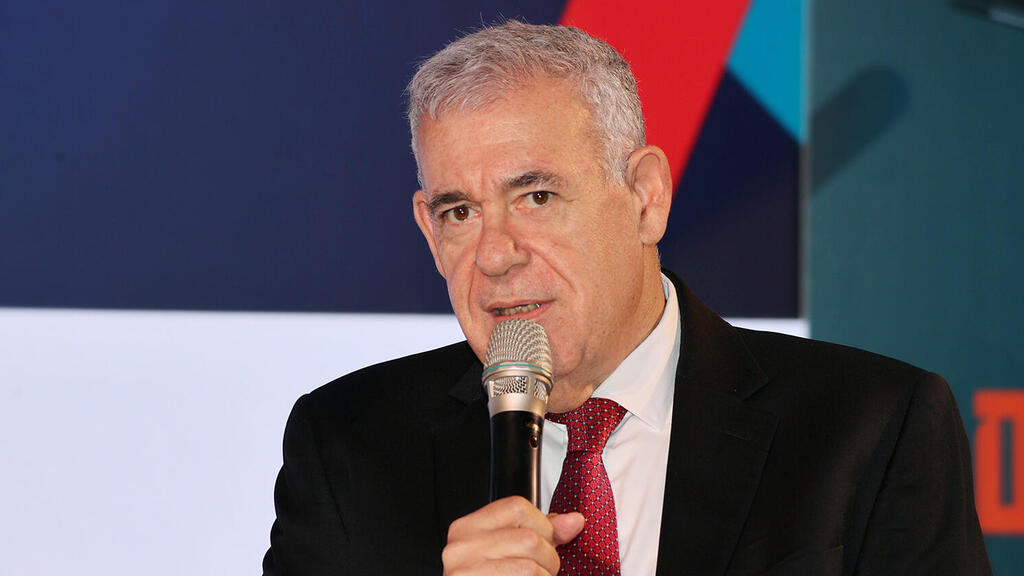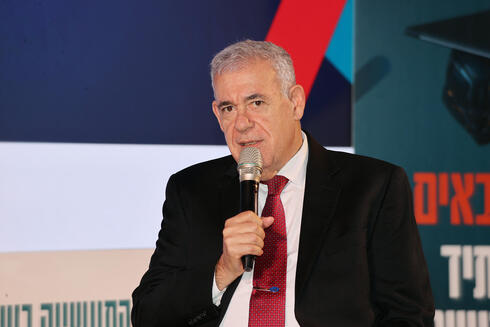
"We must stay ahead of the enemy. The IDF has to know how to respond, and the last war showed that it can"
Boaz Levy, CEO of Israel Aerospace Industries, on how Israel’s defense systems are evolving for the next war.
“In the past two years, Israel has faced events unlike anything in its history - heavy, coordinated barrages targeting civilian areas,” said Boaz Levy, CEO of Israel Aerospace Industries (IAI), in a conversation with Calcalist reporter Yuval Azulay at the Future of Industry in Israel conference, organized by Calcalist and HIT, the Holon Institute of Technology.
“Our defense systems have been developed over 30 years,” Levy continued. “If the Iranians or the Houthis try to surprise us, we will be ready.”
You were among those who developed the system 30 years ago. Do you feel a sense of accomplishment today?
“I began my journey in the Arrow project, back when it was a joint experiment with the Americans,” Levy said. “Over the years, I advanced to become chief engineer and head of the Arrow program. Today, as CEO, I see how this work is being realized, it’s a deeply emotional moment, both nationally and personally. Tremendous credit is due to the ingenuity of the Jewish mind that created something that had never existed before.”
You mentioned that some systems have been exposed, requiring new tools. If there are further rounds of conflict, are we prepared?
“Engineers are always thinking ahead,” he replied. “We’ve already announced the Arrow 4, and we’re planning beyond that. I can reveal that we’re also thinking about Arrow 5, and perhaps even further down the line.”
Are we already developing the Arrow 6?
“We work in a spiral, at every moment, we must stay ahead of the enemy,” Levy said. “The IDF has to know how to respond, and the last war showed that it can.”
Maintaining Israel’s technological edge costs a lot. How do you sustain it?
“I’m here to speak to those who will become the next generation of engineers,” Levy said. “There’s been a lot of talk about AI, but ultimately it’s just a tool. There is no substitute for the human brain. It’s true that we must learn to use AI effectively, but solving complex physical problems will always require human insight.”
Do academic institutions meet industry needs?
“At IAI, we work with all academic institutions in Israel,” he noted. “They provide the essential foundations and understanding that allow us to build upon them.”
As development accelerates, how do you maintain quality?
“It begins with recognizing the problem and breaking it down,” Levy explained. “Today’s engineers have advanced tools that give them an edge over past generations. When I worked on the first Arrow missile, it took months between designing the algorithm and testing it. Today, with AI and 3D printing, that process is dramatically shorter.
“We’re seeing better use of technology, and wartime pushes us to adapt faster. The more mature a system becomes, whether for the Air Force or another branch, the goal is to make maximum software changes and minimal hardware ones.”
Related articles:
Defense production has been moving toward an autarkic economy. Is that realistic?
“I think that statement by the Prime Minister meant that we must be capable of managing on our own,” he clarified. “But no one can operate entirely alone. We have to find the right balance. There are certain capabilities we need to bring back to Israel. Over the years, we’ve lost some, for example, the chip processing industry, which was once large and is now minimal due to labor costs. The state must decide whether it wants to subsidize such activity, and that decision lies with the Ministry of Finance.”
How do you handle the broader challenges facing the industry?
“Everyone saw that not everything went smoothly in the past two years,” Levy admitted. “Some things halted. But we also saw that the systems of the State of Israel worked. We have the ability to overcome engineering difficulties. The out-of-the-box solutions, not the ones that ChatGPT can give everyone, are the foundation of future innovation.”
Has academia recognized this changing reality?
“Academia generally moves slower than industry, which itself moves slower than the market,” he said. “We are all entering a new world. The world today is not the same as it was on October 6th, and it’s only becoming more complex. Academia has no choice but to adapt, or we’ll end up with young engineers who don’t know their craft.
“IAI employs 7,500 engineers, one of the largest engineering workforces in Israel. We serve as a compass for the market. We understand operational needs, and we also need people who can translate those needs into technological solutions. Academia is beginning to change, and that transformation will only accelerate.”
What will the next war look like?
“The future battlefield will be far more complex,” Levy predicted. “In my opinion, Israel has already experienced the first war of the future. While the world debates what the next battlefield will look like, we’ve seen it firsthand. In the past, we focused on satellites, aircraft, and missiles. Today, all systems must communicate for optimal results.
“In the past, wars were army against army. Today, it’s armies against non-state entities, and alliances are shifting. We saw this with the assistance we received during the Iranian attack on Israel. In the future, every system will communicate with every other system, a satellite will detect a target, share it with aircraft and ground assets, and close the operational loop in real time.”
Hundreds of soldiers have been killed in recent years. How can technology help when war remains so bloody?
“War is painful,” Levy acknowledged. “But we must also ask: what would have happened without these technologies? The battlefield in Gaza is immensely complex, especially the war in the tunnels. Without our advanced systems, we couldn’t have achieved what we did. Sending a manned bulldozer into a mined area risks lives; sending an autonomous one doesn’t. This changes the face of warfare. We wanted results, and while we weren’t fully prepared, the challenge drove us forward.”
